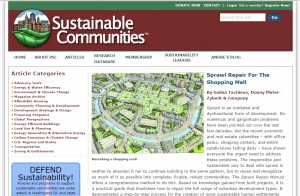Sprawl is an outdated and dysfunctional form of development. Its numerous and gargantuan problems have been pointed out over the last few decades, but the recent economic and real estate calamities – with office parks, shopping centers, and entire subdivisions failing daily – have shown everyone the urgent need to address these problems. The responsible and sustainable way to deal with sprawl is neither to abandon it nor to continue building in the same pattern, but to reuse and reorganize as much of it as possible into complete, livable, robust communities. The Sprawl Repair Manual offers a comprehensive method to do this. Based on knowledge gained from built projects, it is a practical guide that illustrates how to repair the full range of suburban development types. It demonstrates a step-by-step process for the creation of more sustainable human settlements out of our wasteful sprawling landscape. This is a framework for designing the interventions, incorporating them into the regulatory system, and implementing them with permitting strategies and financial incentives.
Below is an edited excerpt from the Sprawl Repair Manual that demonstrates the transformations of one of the most typical and promising contenders for sprawl repair, the shopping mall. (Analysis of the region and the site’s immediate context, as well as urban design, zoning and implementation techniques, are explained in more detail in the book). Because of their location, parcel size, ownership structure, and opportunities for transit and mixed uses, malls have great potential to be transformed into transit-ready urban cores, commonly referred to as town centers.
